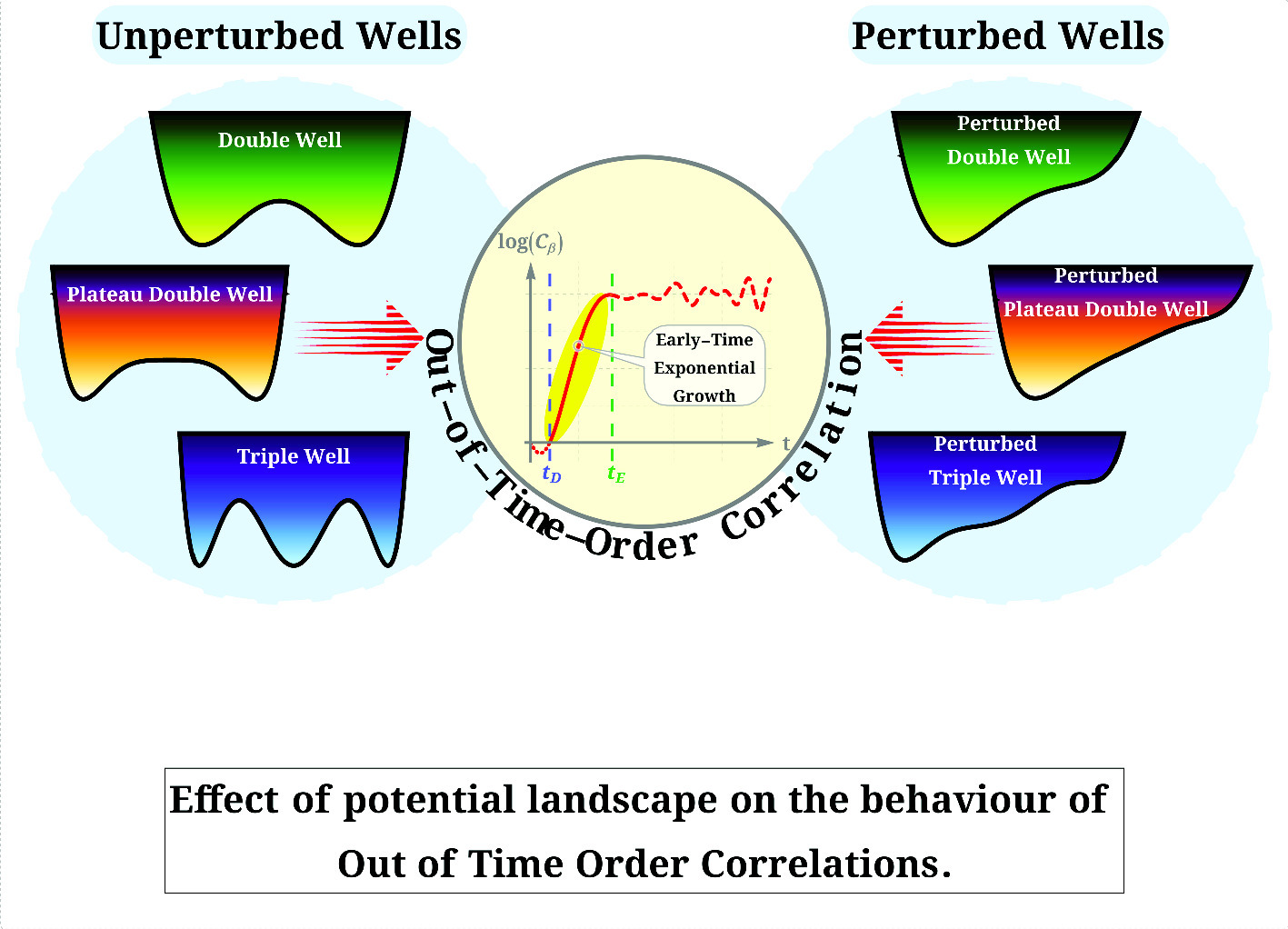https://doi.org/10.1140/epjd/s10053-025-01025-7
Regular Article - Nonlinear Dynamics
Out-of-Time-Order Correlation in perturbed quantum wells
Department of Physics and Astronomy, National Institute of Technology Rourkela, 769008, Odisha, India
Received:
19
December
2024
Accepted:
10
June
2025
Published online:
28
June
2025
Out-of-Time-Order Correlator (OTOC) and Loschmidt Echo (LE) are commonly regarded as diagnostic tools for chaos, although they may yield misleading results, as we observe. Previous studies have concluded that OTOC shows exponential growth in the neighbourhood of a local maximum. If this statement holds true, the exponential growth should break off once the local maximum is no longer present within the system. By applying a small symmetry-breaking perturbation, we notice that the behaviour of the OTOCs remains remarkably resilient even in the absence of a maximum. Besides this, we also notice that with the increase in perturbation strength, the broken symmetric region expands, causing a broader range of eigenstates to engage in the exponential growth of OTOCs. Therefore, the critical factor lies not in the presence of a local maximum, but in the dynamic nature of the density of states in the broken symmetry regions. Our examination, spanning diverse one- dimensional potential landscapes, reveals the universality of this phenomenon. We also use other chaos diagnostic tool, LE. Interestingly, it also gives a false signal of chaos.
Copyright comment Springer Nature or its licensor (e.g. a society or other partner) holds exclusive rights to this article under a publishing agreement with the author(s) or other rightsholder(s); author self-archiving of the accepted manuscript version of this article is solely governed by the terms of such publishing agreement and applicable law.
© The Author(s), under exclusive licence to EDP Sciences, SIF and Springer-Verlag GmbH Germany, part of Springer Nature 2025
Springer Nature or its licensor (e.g. a society or other partner) holds exclusive rights to this article under a publishing agreement with the author(s) or other rightsholder(s); author self-archiving of the accepted manuscript version of this article is solely governed by the terms of such publishing agreement and applicable law.





